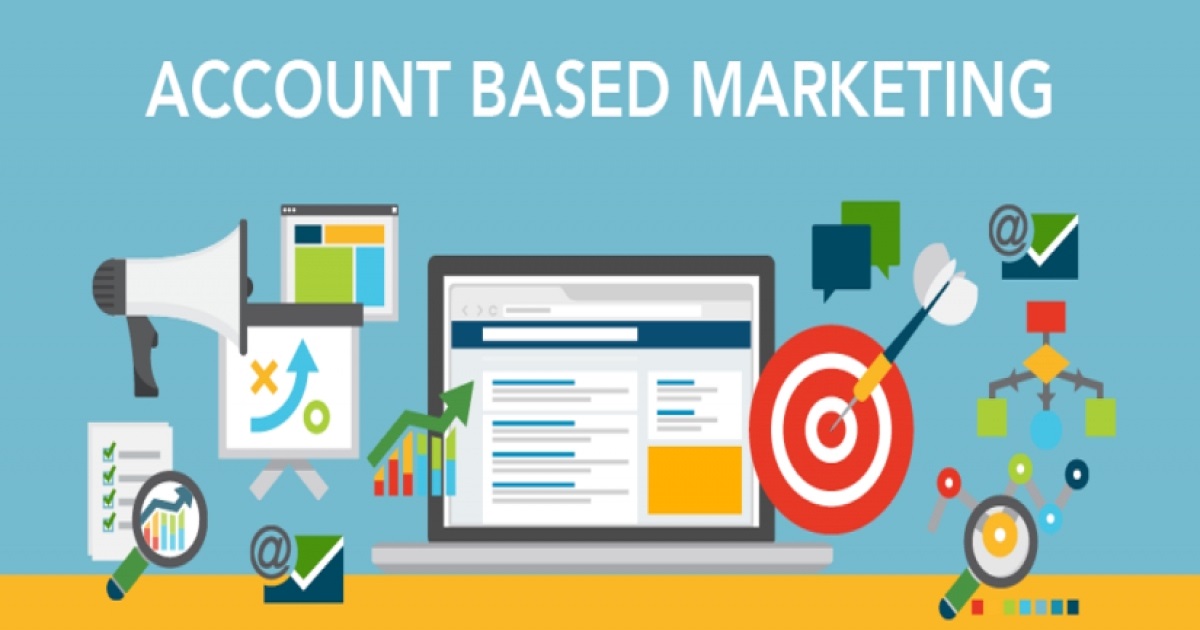Account-Based Marketing is the most powerful tactic to use for B2B lead generation. The article provides a step-by-step guide through setting up your ABM strategy and marketing plan, including creating personas and buying lists.
What Is Account-Based Marketing?
ABM, or Account-Based Marketing, is a strategy in which businesses focus on key accounts and work to cultivate relationships with those accounts. The goal of ABM is to generate more business from these key accounts by providing them with personalized attention and tailored content.
ABM is different from other marketing strategies in that it focuses on quality over quantity. Rather than trying to reach as many people as possible, businesses using an ABM strategy focus on reaching the right people at the right time. This allows businesses to save money and resources while still generating quality leads.
To implement an ABM strategy, businesses first identify their key accounts. Once these accounts have been identified, businesses can then create targeted content and campaigns specifically for them. This content should be designed to nurture relationships and build trust between the business and the account.
The final step in implementing an ABM strategy is to measure the results. By tracking metrics such as engagement and conversion rates, businesses can determine whether their efforts are paying off. If not, they can make adjustments to their approach until they find a strategy that works for their business.
How To Use ABM
Account-based marketing (ABM) is a strategy in which businesses focus on key accounts instead of targeting a larger group of prospects. The goal of ABM is to create customized campaigns that are designed to address the specific needs of each account.
There Are Several Steps That Businesses Can Take To Implement An ABM Strategy:
- Define Your Target Accounts: The first step is to identify the accounts that you want to target. This can be done by looking at factors such as revenue potential, fit with your products or services, and level of engagement.
- Create account profiles: Once you have identified your target accounts, you need to create detailed profiles for each one. These profiles should include information about the decision-makers, their pain points, and what they are looking for in a solution.
- Develop Personalized Campaigns: The next step is to develop campaigns that are tailored to each account. Your campaigns should be designed to address the specific needs of each account and target the decision-makers within those organizations.
- Implement Account-Based Tracking: To measure the success of your ABM campaigns, you need to implement tracking at the account level. This will allow you to see which accounts are responding to your campaigns and what type of engagement you are getting from each one.
By following these steps, businesses can implement an effective ABM strategy and start seeing results from their targeted efforts.
Types of ABM
Shared account-based marketing is a more scaled-down version of 1:1 ABM. In this type of ABM, multiple accounts are grouped together and given a semi-customized marketing approach. This allows for more efficiencies in the use of resources but still provides a high degree of customization and personalization.
Mass account-based marketing is the least customized form of ABM. In this type of ABM, all accounts are lumped together and given the same generic marketing approach. This is often used in situations where there are too many accounts to feasibly manage individually or when budget constraints make it impossible to customize each account’s strategy.
Why Do Businesses Adopt ABM?
Account-based marketing (ABM) is a strategic approach that aligns marketing and sales efforts to specific accounts instead of casting a wide net with generic messages. The main goals of ABM are to increase revenue and ROI, as well as improve customer relationships.
There Are Several Reasons Businesses May Choose To Adopt An ABM Strategy:
- To Focus on Key Accounts: By identifying and targeting key accounts, businesses can allocate resources more efficiently and effectively. This leads to improved results and a higher ROI.
- To Better Align Marketing And Sales: ABM helps align the efforts of marketing and sales, so they are working together towards common goals. This alignment can lead to increased efficiency and effectiveness in both departments.
- To Improve Customer Relationships: ABM allows businesses to develop targeted campaigns specifically for their best customers. This personalized approach can help improve customer satisfaction and loyalty.
Benefits/Advantages of ABM:
There are many benefits and advantages to using an account-based marketing (ABM) strategy to grow your business.
First, ABM allows you to focus your resources on specific accounts that are most likely to convert into customers. This targeted approach is more efficient and effective than traditional mass marketing techniques, which often result in a lot of wasted effort and money.
Second, ABM provides insights into the specific needs and wants of your target accounts. This allows you to customize your marketing messages and sales pitches to better appeal to these key decision-makers.
Third, ABM can help you build deeper relationships with your target accounts. By getting to know their specific pain points and challenges, you can position yourself as a trusted advisor who can help them solve their problems.
Fourth, ABM can lead to higher conversion rates and faster sales cycles. Because you are targeting specific accounts that are already interested in your products or services, they are more likely to buy from you when they see your marketing messages.
Finally, ABM can help you scale your business by allowing you to replicate successful campaigns across multiple accounts. By understanding what works with one account, you can apply those learnings to other accounts in order to achieve similar results.
Challenges And Risks of Adopting ABM:
Like any marketing strategy, account-based marketing comes with a unique set of challenges and risks that businesses need to be aware of before adopting it.
One of the biggest challenges of ABM is finding the right accounts to target. This can be a difficult and time-consuming process, especially for businesses that are new to ABM. Additionally, even when the right accounts are identified, there is no guarantee that they will be interested in what your business has to offer.
Another challenge of ABM is that it can be difficult to measure the success of your campaigns. Because ABM is focused on quality over quantity, it can be hard to track metrics like leads generated or conversion rates. This can make it difficult to justify the investment in an ABM strategy to upper management.
Finally, one of the biggest risks of ABM is that it requires a significant amount of investment upfront. Not only do you need to invest in technology and data, but you also need to allocate resources towards developing relationships with key decision-makers at your target accounts. This all takes time and money, which can be difficult for small businesses or those with limited budgets.
Conclusion:
If you’re looking for a way to take your marketing efforts to the next level, consider using an account-based marketing strategy. ABM can help you laser-focus your marketing efforts on high-value accounts, which can lead to more closed deals and a higher ROI for your business. Implementing an ABM strategy does require some upfront work, but it’s well worth the effort if you’re serious about growing your business.

